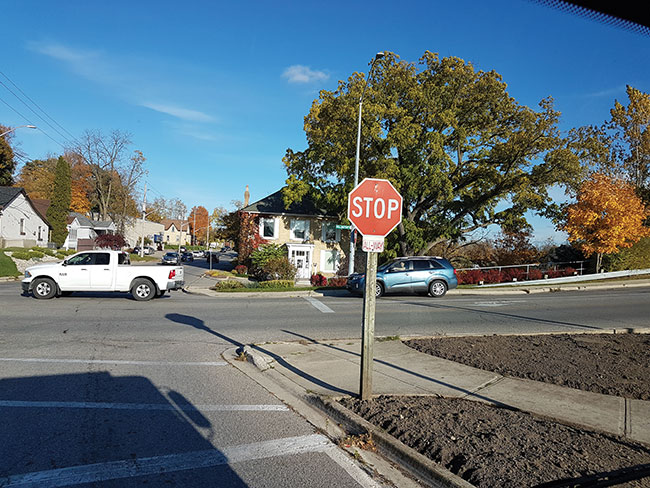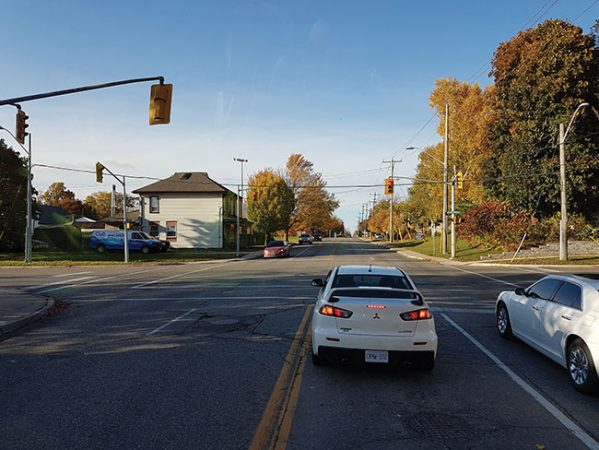
Features
Back to Basics: Stop for the red light
November 15, 2019
By Mark van der Feyst
 The key traffic danger in responding to an incident is at an intersection with either stop signs or a set of traffic lights. This is where we find a good number of collisions taking place with other emergency responding vehicles or with civilian vehicles.
The key traffic danger in responding to an incident is at an intersection with either stop signs or a set of traffic lights. This is where we find a good number of collisions taking place with other emergency responding vehicles or with civilian vehicles.
We are coming to the close of another year and heading into wintertime. Some parts of the country will have already experienced winter in full force with snow accumulating. In other parts of Canada, we are just getting into it!
We are ending our series on things firefighters are becoming desensitized to daily by wrapping up with a look at a driving related issue, namely, the red light. In 2018, the NFPA compiled data showing that 10 firefighters were killed responding to or returning from an incident scene, with eight of them resulting from a crash. This is a low number (16 per cent) of the total number of firefighter fatalities, but it’s still an alarming number to see.
In 2017, the NFPA reported there were 15,430 collisions involving fire department vehicles responding to or returning from incidents resulting in 1,005 injuries. There were also 750 collisions involving firefighters’ personal vehicles who were responding to or returning from incidents.
So, what is the big deal? These are U.S. statistics and not pertinent to Canada, right? They may be U.S. statistics, but the numbers still paints a picture for us in how we should be approaching driving duties and how easy it is for us to get into a collision with the fire truck or our own personal vehicle.
The key traffic danger in responding to an incident is at an intersection with either stop signs or a set of traffic lights. This is where we find a good number of collisions taking place with other emergency responding vehicles or with civilian vehicles.
The results of a collision can be fatal for the firefighter and/or the civilian. Most times, when we have a collision with a fire truck and a civilian vehicle, the occupant of the civilian vehicle will end up sustaining the most injuries or worse, be killed. Just based on physics, a fire truck weighs more than a passenger car, and multiply that with the speed of both vehicles at the moment of impact and the results can be fatal.
What governs us in our driving is the Highway Traffic Act (HTA) or a variation of it for each province. Within the HTA is a provision that allows emergency response personnel to pass through an intersection against a red light, if certain parameters have been met. The main requirement is that the emergency vehicle must come to a complete stop before proceeding through the red light. The other requirement is that there must be flashing lights and a siren turned on when doing so.
To assist the fire department with decreasing the time it takes to respond to a call and increasing passenger safety, many municipalities have installed traffic control devices. These devices are designed to control the lights when they are initiated by means of strobe lights, GPS locators, siren sound or flashing lights. If the light is red, they will automatically turn to green giving the emergency vehicle the ability to travel through. As much as these devices are a great help for the fire department, they cannot be relied on all the time. Even with a traffic control device, if the light does not turn from red to green in time, the fire truck must come to a complete stop before proceeding through.

Within the HTA is a provision that allows emergency response personnel to pass through an intersection against a red light, if certain parameters have been met. The main requirement is that the emergency vehicle must come to a complete stop before proceeding through the red light. The other requirement is that there must be flashing lights and a siren turned on when doing so. Photos by Mark van der Feyst
Coming to a complete stop applies to all times of the day. Even at 3 a.m. when there is no traffic at all, we must come to a complete stop. It will be that one vehicle and occupant out at an uncommon hour that will be the victim of us not stopping first before proceeding through.
So far we have focused on the fire truck, but what about the personal vehicle (POV)? These vehicles may be equipped with a green light to indicate to other drivers that they are responding to an emergency, but does it give them a free pass to speed or go through red lights? The answer is no.
We only have to look back in history to September 2007 when a firefighter responding to a call in New Dundee, Ont., struck and killed a person when arriving on scene. Sadly, the fallout was a person killed, the firefighter charged with the incident and a fire department having to recover from the ordeal.
So, what can be done to help reinforce the need for safe driving and to ensure that we stop at all red lights? Training. First off, ensure that there is a process in place to qualify people to be a driver of a fire truck. Just because you have the proper license, does not make you a qualified driver. There must be an in-house process to qualify someone to drive.
Secondly, there needs to be SOPs or SOGs outlining the responsible ways that department personnel will operate fire trucks, including responding to calls, returning from calls, how to proceed through a red light or intersection, etc.
Thirdly, practice and testing. Each driver will need time to practice their skills driving and will eventually go through the NFPA road course test. This will prove their ability to operate a fire truck effectively and safely and provide proper documentation for the department.
On the POV side, there is much more difficulty reinforcing the rules of the road from a fire department perspective on a person who is driving their own vehicle. One way is to require all people respond to the station first, then take a fire truck to the scene as opposed to responding directly to the scene. Another way is by enforcement, such as periodic driver abstract checks to gauge driving history coupled with department policy for not complying with the HTA. This could mean immediate dismissal if contravention of the act has been committed.
Mark van der Feyst has been a member of the fire service since 1999 and is a full-time firefighter in Ontario. Mark teaches in Canada, the United States and India, and is a FDIC instructor. He is the lead author of the Residential Fire Rescue book. Contact Mark at Mark@FireStarTraining.com.
Print this page